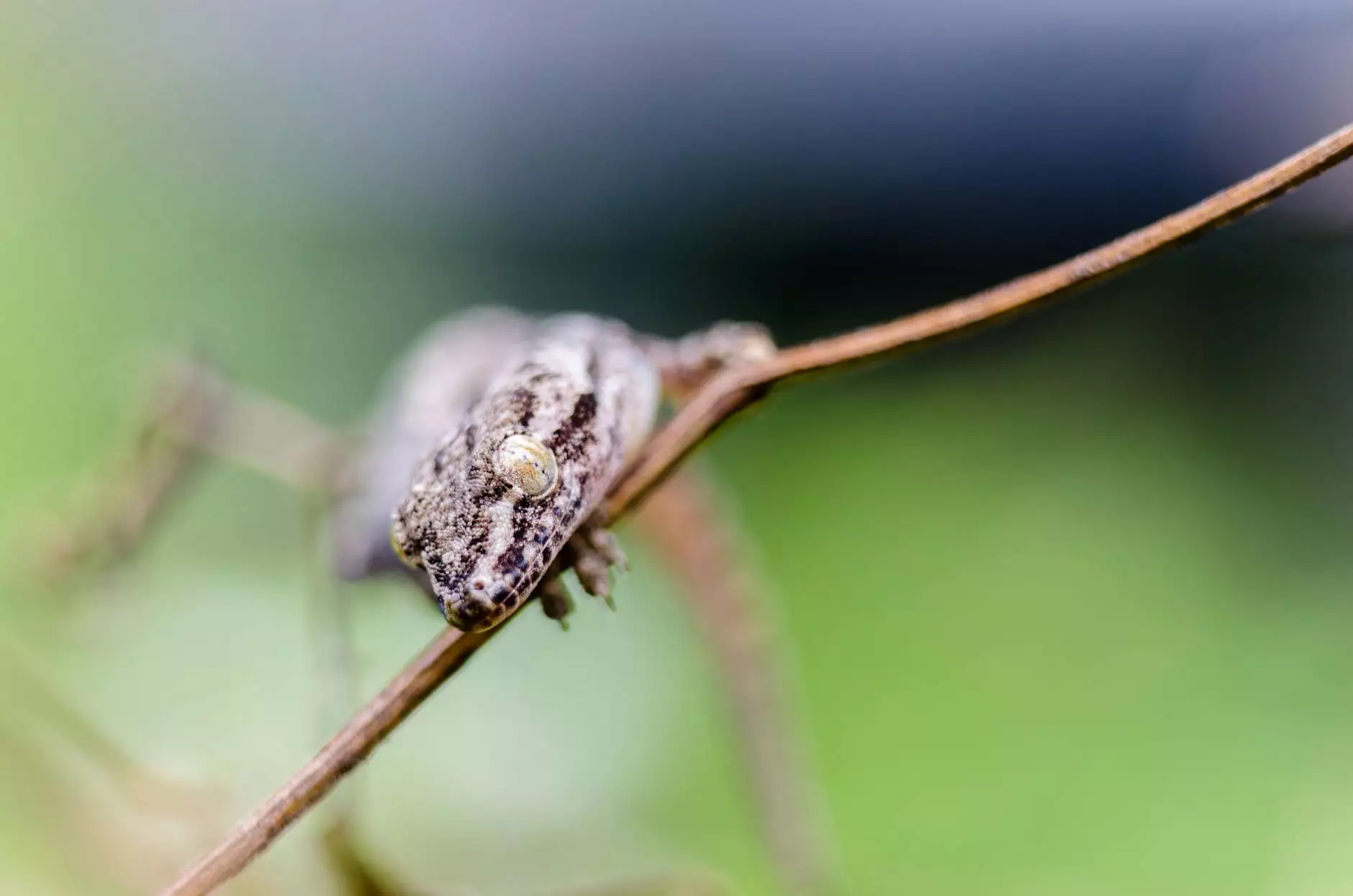Gecko Pet Lizards: Your Ultimate Guide to Care and Breeding

When it comes to choosing a unique and captivating pet, few animals can compare to gecko pet lizards. These incredible reptiles not only serve as exquisite companions but also offer an engaging hobby for reptile enthusiasts. Whether you are a seasoned reptile keeper or a budding enthusiast, this comprehensive guide will equip you with all the necessary knowledge to thrive in the fascinating world of gecko pet lizards.
What Makes Gecko Pet Lizards a Popular Choice?
Gecko pet lizards have surged in popularity over recent years for several compelling reasons:
- Diversity: Over 1,500 species of geckos exist, each boasting unique colors, patterns, and behaviors. This allows enthusiasts to select a lizard that resonates with their preferences.
- Easy Care: Gecko pet lizards are generally low-maintenance pets, making them ideal for beginners and busy individuals.
- Unique Charm: Their quirky habits, such as climbing walls and vocalizations, provide a source of constant amusement.
- Long Lifespan: With proper care, many gecko species can live for 10-20 years, resulting in a long-term companionship.
- Eco-Friendly Pet: As cold-blooded creatures, geckos do not require the same level of space or resources as traditional pets (like dogs or cats).
Popular Species of Gecko Pet Lizards
As you venture into the world of gecko pet lizards, you’ll find that some species stand out due to their distinct characteristics and charm. Here are a few of the most popular:
1. Leopard Gecko (Eublepharis macularius)
The Leopard Gecko is perhaps the most well-known pet gecko. With their striking spots and vibrant colors, they are not only visually appealing but also known for their friendly disposition. They are nocturnal and thrive in captivity, making them ideal for new reptile owners.
2. Crested Gecko (Corneleone ciliatus)
The Crested Gecko has become a favorite for its unique appearance and gentle nature. They have a soft, velvety skin and can exhibit a variety of color morphs. Unlike many other gecko species, they do not have adhesive toe pads but rely on their physical agility to navigate their environment.
3. Tokay Gecko ()
The Tokay Gecko is renowned for its vibrant blue and orange coloration, making it a standout choice. However, this species tends to be more aggressive and is recommended for experienced owners. They are also known for their loud vocalizations.
4. African Fat-Tailed Gecko ()
Similar in habits to the Leopard Gecko, the African Fat-Tailed Gecko is famous for its robust body and distinctive fat tail. They are docile and enjoy being handled, making them suitable for regular interaction.
Setting Up the Ideal Habitat for Gecko Pet Lizards
Creating an optimal habitat is crucial for the health and happiness of your gecko pet lizard. Below are the key elements you should consider when setting up their vivarium:
1. Enclosure Size
The size of the enclosure will depend on the species of gecko you own. Generally, a minimum of a 20-gallon tank is recommended for smaller species like the Leopard Gecko. For larger species such as the Tokay Gecko, a bigger terrarium is necessary.
2. Temperature and Humidity
Temperature is critical to the health of reptiles. Most geckos require a gradient of temperatures within their enclosure:
- Hot Spot: A basking area should be maintained around 90-100°F (32-38°C).
- Cool Side: The opposite end of the tank should range between 70-80°F (21-27°C).
Humidity levels vary by species, but generally, you want to maintain a humidity range of 30-70%. Regular misting and a water dish can help achieve the right balance.
3. Substrate
The choice of substrate can impact the health of your gecko. Options include:
- Reptile Carpet: Easy to clean and prevents impaction.
- Like For Leopard Geckos: Paper towels for easier cleaning and to prevent substrate ingestion.
- Sand: Not recommended for young geckos due to the risk of impaction.
4. Decorations and Hiding Spots
Geckos are naturally inclined to hide. Incorporating various decorations such as rocks, branches, and caves will provide them with the security they seek. Live plants can also help maintain humidity levels and enhance the overall aesthetics of the environment.
Feeding Your Gecko Pet Lizard
Diet plays a vital role in the health of your gecko pet lizard. Most geckos are insectivores, meaning their diet should primarily consist of live insects. Here are important points to consider when feeding them:
- Types of Food: Crickets, mealworms, dubia roaches, and silkworms are excellent choices.
- Supplementation: Dusting insects with calcium and vitamin supplements is necessary to ensure your gecko receives all essential nutrients.
- Feeding Schedule: Juveniles should be fed every day, while adults can be fed every other day.
Breeding Gecko Pet Lizards: A Guide for Enthusiasts
If you are interested in breeding gecko pet lizards, understanding their reproductive habits is essential. Here's a closer look:
1. Breeding Season
Most gecko species breed during spring and early summer. Ensure that your breeding pair has been properly housed and cared for to increase the chances of successful breeding.
2. Mating Behavior
During mating season, males may engage in courtship displays, including head bobbing and tail waving. This is a natural part of the breeding process that helps solidify pair bonds.
3. Egg-Laying
Female geckos will lay two eggs per clutch, usually every few weeks. Provide a moist substrate in an egg-laying box to ensure the eggs have a suitable environment.
4. Incubation
The incubation period for gecko eggs varies by species, usually around 60-90 days. Maintaining a consistent temperature within the range of 78-82°F (25-28°C) is critical for healthy hatchling development.
Common Health Issues in Gecko Pet Lizards
To provide optimal care for your gecko pet lizard, being aware of common health issues is vital. Here are some problems to look out for:
- Metabolic Bone Disease (MBD): Caused by a lack of calcium and UVB light, MBD can lead to weak bones and deformities. Regular supplementation is crucial.
- Impaction: Occurs when geckos ingest substrate or oversized prey. Prevent this by ensuring a safe feeding environment and appropriate substrate choices.
- Respiratory Infections: Symptoms include wheezing and lethargy. Providing suitable temperatures and humidity levels can help prevent this issue.
Creating a Bond with Your Gecko Pet Lizard
Building a relationship with your gecko pet lizard takes time and patience. Here are some tips to help strengthen that bond:
- Gentle Handling: Start by gently handling your gecko for short periods. Allow them to acclimate to your presence.
- Consistent Environment: Maintaining a stable habitat and routine will help your gecko feel secure.
- Feeding Time: Engage with your gecko during feeding time, offering insects by hand to establish trust.
Conclusion: Embrace the Joy of Gecko Pet Lizards
Owning gecko pet lizards can be a rewarding experience filled with excitement and companionship. By understanding the specific needs of your chosen species, you can create a thriving environment that fosters their health and happiness. With the information provided in this guide, you are well-equipped to embark on an exciting journey into the world of gecko pet lizards.
For more information and to explore a wide range of gecko pet lizards and supplies, visit us at EU Exotic Reptiles.









